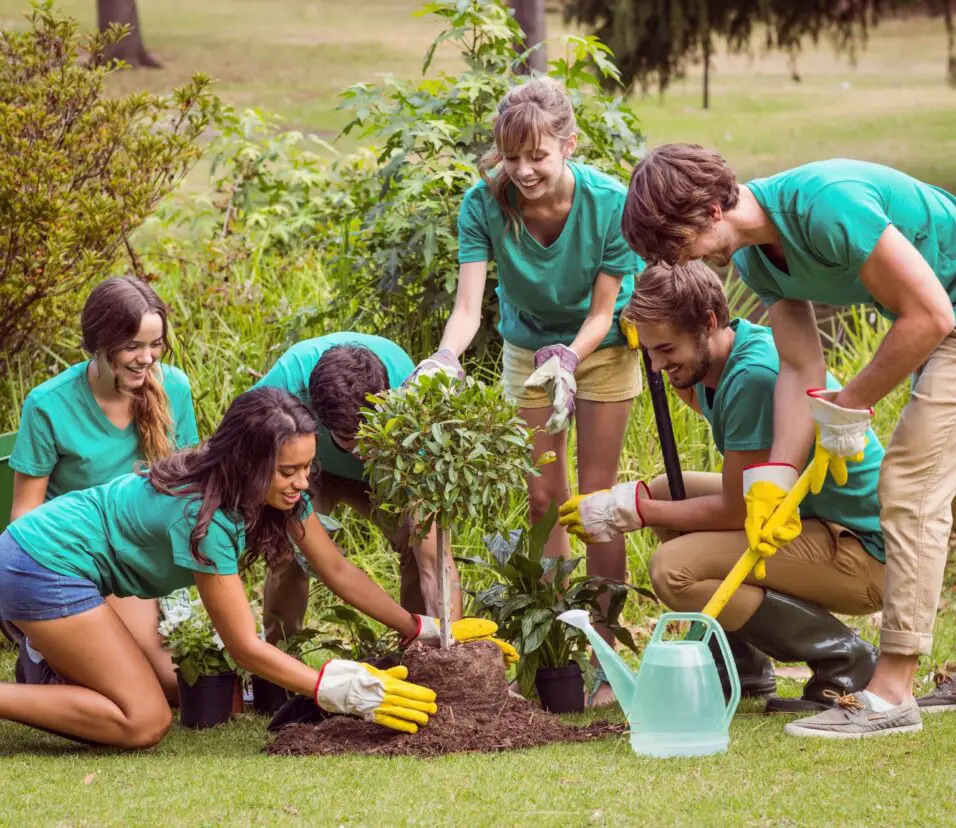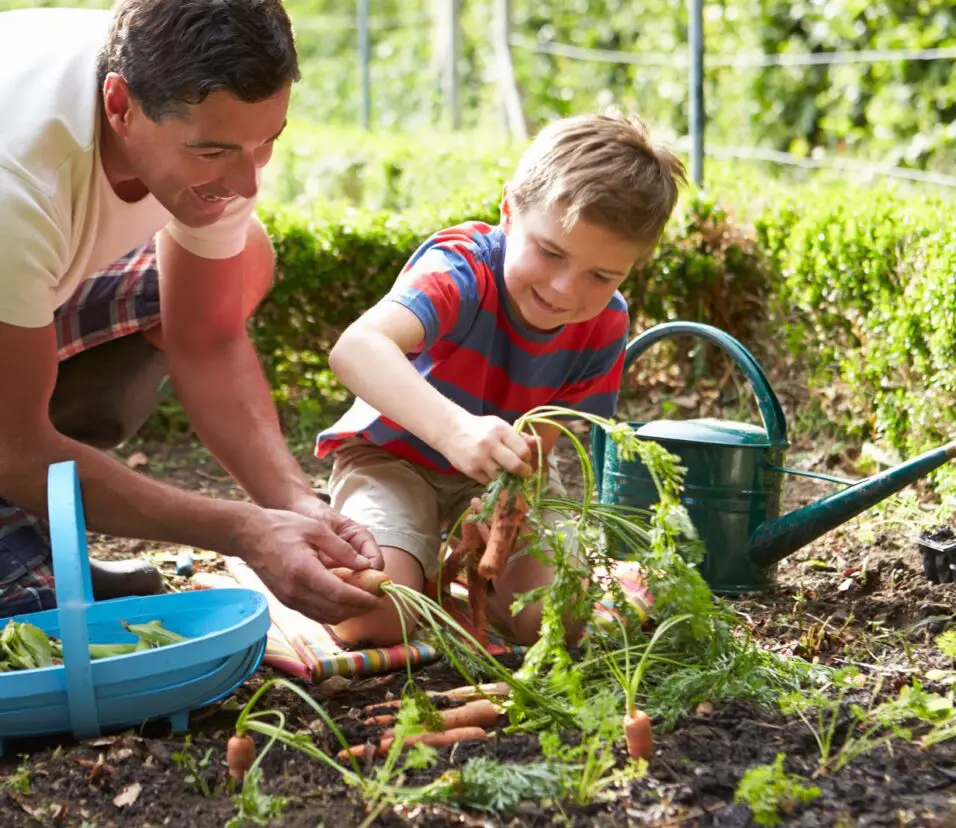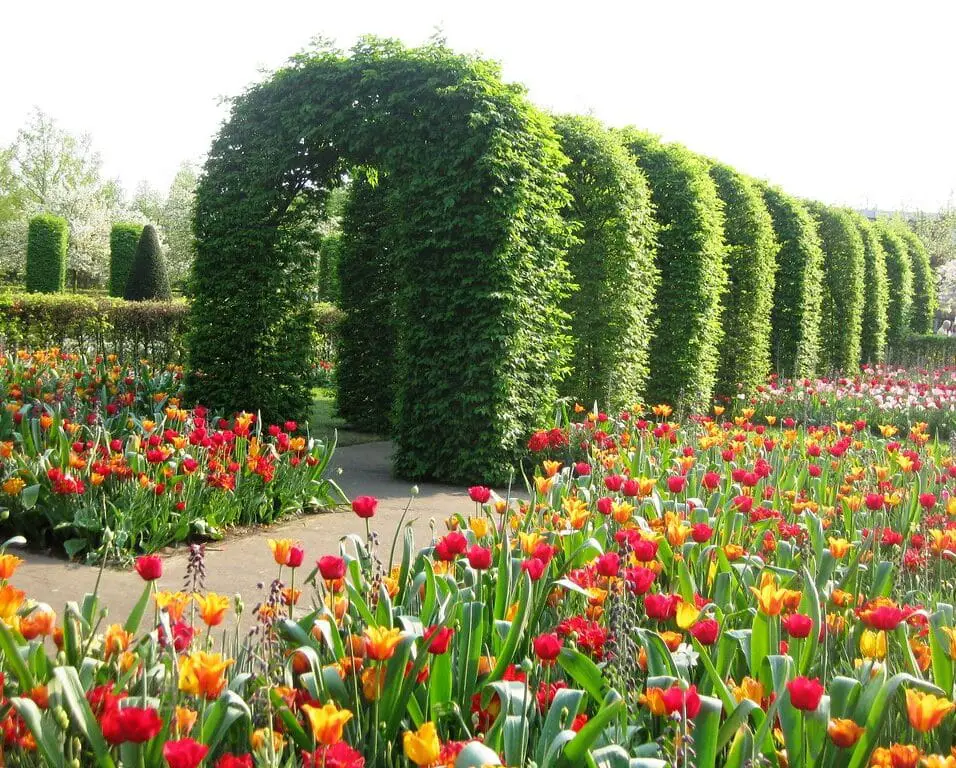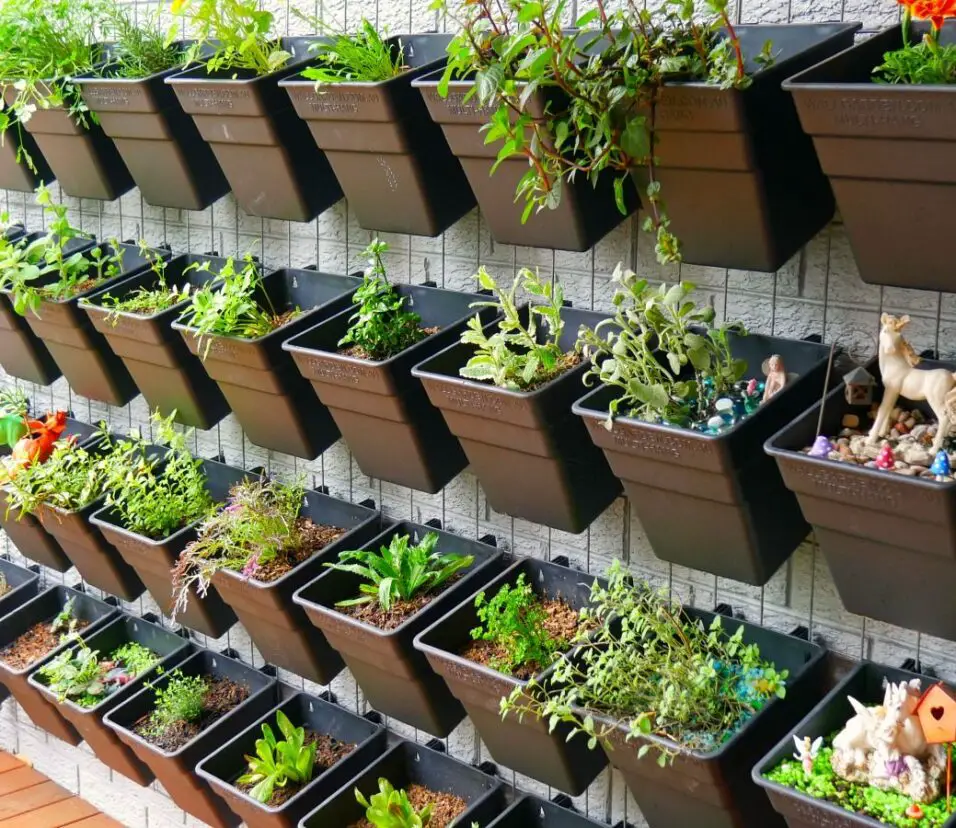What Does A Gardening Hoe Look Like
Introduction
What Does A Gardening Hoe Look Like: A gardening hoe is a tool that is commonly used in gardening and landscaping. It is designed to help with various tasks such as digging, weeding, and cultivating the soil. The hoe consists of a long handle with a flat, rectangular blade attached at one end. The blade is typically made of metal, such as steel or iron, and is curved slightly to allow for easier movement through the soil.
The shape and size of a gardening hoe can vary depending on its intended use. There are several different types of hoes available, each with its own unique design and purpose. For example, a standard urban gardening hoe has a broad, flat blade that is ideal for breaking up soil and removing weeds. This type of hoe is often used for general gardening tasks and is suitable for both small and large areas.
In addition to these common types of hoes, there are also specialized hoes available for specific gardening tasks. For example, a draw hoe has a blade that is shaped like a triangle, with a pointed tip. This type of hoe is often used for creating furrows or trenches in the soil, making it useful for planting seeds or bulbs. A grub hoe, on the other hand, has a blade that is wider and heavier, making it suitable for digging and breaking up tough soil.
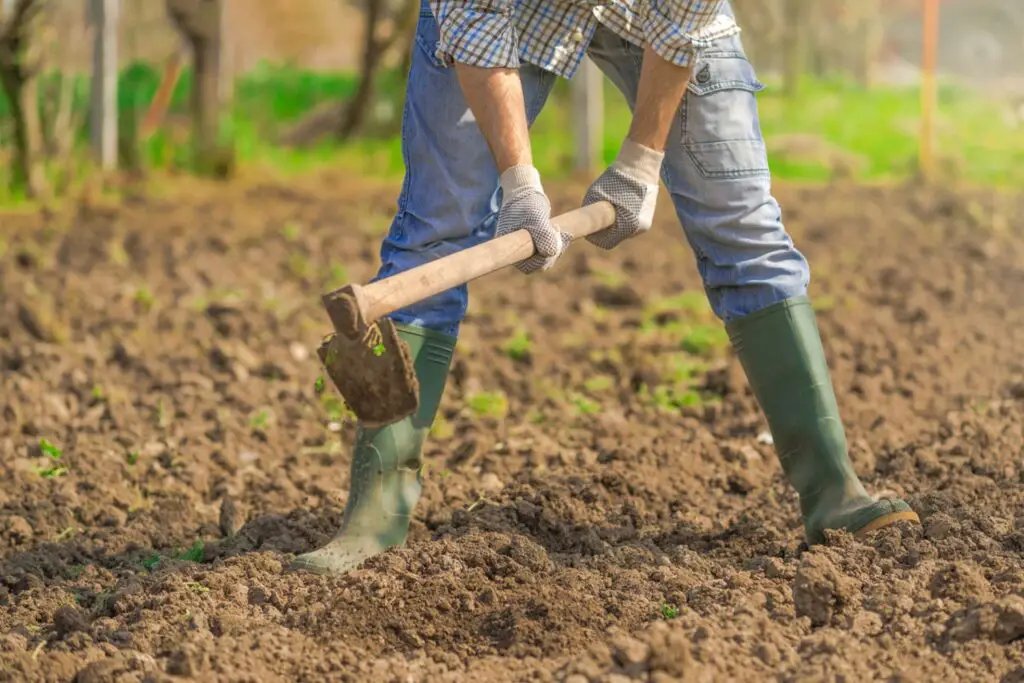
What does a hoe do in gardening?
A hoe is a versatile tool that is commonly used in gardening. It is a long-handled tool with a flat, sharp blade that is used for various purposes in the garden. The hoe is an essential tool for any gardener as it helps in maintaining the garden and keeping it free from weeds.
One of the main tasks that a hoe performs in gardening is weeding. Weeds are unwanted plants that compete with the desired plants for nutrients, water, and sunlight. They can quickly take over a garden if not controlled. The hoe is used to remove these weeds by cutting them off at the base, preventing them from growing further.
In addition to weeding, a hoe is also used for cultivating the soil. Cultivation involves loosening the soil and breaking up any clumps to create a better environment for plant growth. The hoe is used to dig into the soil and turn it over, allowing air and water to penetrate deeper into the ground.
Another important task that a hoe performs is creating furrows or trenches for planting seeds or seedlings. The hoe is used to dig shallow trenches in the soil, which are then filled with seeds or seedlings. This ensures that the plants are properly spaced and have enough room to grow.
Furthermore, a hoe can also be used for hilling soil around plants. Hilling involves piling up soil around the base of plants, which helps to support them and protect their roots. This is especially important for plants that have shallow roots or are prone to toppling over.
What should I look for in a garden hoe?
Incorrect blade angles make some hoes tougher to use. For instance, the draw hoe above should have a 20–30-degree angle between the blade back and ground. It cuts soil easily.
A garden hoe is vital for any gardener. It breaks up soil, removes weeds, and makes seed furrows. To find the perfect garden hoe, consider various things.
First, choose a hoe that suits your tasks. Standard, scuffle, and warren garden hoes are available. The most common and adaptable hoe has a flat blade for many purposes. Scuffle hoes cut weeds below the soil with their looping blades. Warren hoes are ideal for seeding furrows due to their triangular blades.
Second, evaluate hoe material. Garden hoes are usually stainless or carbon steel. Stainless steel hoes resist rust and corrosion, making them ideal for humid or damp climate gardeners. Although stronger and more durable, carbon steel hoes may require more care to prevent corrosion.
Third, examine hoe length and weight. Handle length should be comfortable to hold and manipulate. The leverage of a longer handle might also make it harder to manage. Weight is also important, since a heavier hoe may need more effort to wield, especially for long durations.
Finally, evaluate hoe pricing and brand. Consider buying a high-quality hoe that will last for years while staying within your budget. Choose a trustworthy and durable tool by researching brands and reading reviews.
What is the difference between plough and hoe for Class 8?
Tools used for the preparation of the soil before sowing are: Plough – used for tilling, the addition of fertilizers, weed removal, and turning of the soil. Hoe – It mainly helps in the removal of the weeds and loosening of the soil.
Plough and hoe are two different agricultural tools used for different purposes.
A plough turns dirt before planting. Usually hauled by a tractor or horse or ox. The ploughshare cuts and twists the soil, revealing the nutrient-rich soil underlying. This improves soil aeration and plant growth. Pre-planting ploughing is crucial to crop production.
However, a hoe is a portable instrument for weeding and cultivating soil. It has a long grip and flat, rectangular blade. Hoe blades dig into soil to eradicate weeds or loosen plant soil. Hoes are used for small-scale gardening or plant care in bigger fields. They also break up soil clumps and dig seed furrows.
The plough and hoe have various agricultural uses. Hoes are used for soil management and cultivation, while ploughs are used for initial soil preparation and are usually larger. The plow turns over broad amounts of land faster, while the hoe is more exact and allows for more detail.
The purpose and scale of use distinguish ploughs from hoes. The plough prepares soil on a big scale, whereas the hoe maintains and cultivates it on a smaller scale.
What are important garden tools?
You can ease the laborious work of digging your soil with shovels and spades. Digging with your hands or wooden poles would be very difficult, especially in large gardens with hard soil. A spade, on the other hand, is quite useful for digging jobs. It can be used to dig holes in confined spaces.
One of the most important garden tools is a good pair of gardening gloves. Gloves protect your hands from thorns, sharp edges, and other potential hazards in the garden. They also provide a barrier between your skin and any chemicals or fertilizers that you may be using. Look for gloves that are durable, comfortable, and provide a good grip.
A sturdy garden trowel is another essential tool for any gardener. This handheld tool is perfect for digging small holes, transplanting seedlings, and loosening soil. Look for a trowel with a comfortable handle and a strong, durable blade.
A garden rake is another important tool for maintaining a healthy garden. Rakes are used to level soil, remove debris, and spread mulch. Look for a rake with sturdy tines and a comfortable handle.
A watering can or hose is essential for keeping your plants hydrated. Look for a watering can with a long spout that allows for easy watering of plants in hard-to-reach areas. If you prefer to use a hose, look for one that is durable and has an adjustable nozzle for different watering needs.
How do you use onion hoe?
To use a hand-held onion hoe, you hold the handle with one hand and use the blade to slice through weeds or cultivate the soil around your onion plants. The hoe can be used to loosen the soil, remove weeds, and help to control pests and diseases.
An onion hoe is a gardening tool specifically designed for weeding and cultivating soil around onion plants. It is a handheld tool with a long handle and a sharp, narrow blade that is shaped like a triangle or a heart. The blade is usually made of stainless steel or carbon steel, which makes it durable and resistant to rust.
To use an onion hoe, start by positioning yourself next to the onion plants that need to be weeded. Hold the handle of the hoe firmly with both hands, making sure to maintain a comfortable grip. The long handle allows you to stand upright while working, reducing strain on your back and knees.
Next, position the blade of the hoe just above the soil surface, near the base of the onion plants. Angle the blade slightly towards the plants, ensuring that it is parallel to the ground. This angle allows you to easily slide the blade under the surface of the soil without damaging the onion plants.
Once the hoe is in position, push it forward with a sweeping motion.
The sharp blade will cut through any weeds or grass that are growing around the onion plants, effectively removing them from the soil. Make sure to move the hoe in a controlled manner to avoid accidentally damaging the onion plants.
After each forward motion, pull the hoe back towards you to remove any debris that may have accumulated on the blade. This will prevent the debris from interfering with the effectiveness of the hoe and ensure that it continues to cut through the soil smoothly.
Continue this process, moving along the row of onion plants and removing any weeds or grass that you come across. Remember to take breaks as needed and stay hydrated while working in the garden. Regular use of an onion hoe will help keep your onion plants healthy and free from competition with weeds, allowing them to grow and thrive
In summary, a gardening hoe has a long handle, a flat and slightly curved metal blade, and is designed to be used for breaking up soil and removing weeds. Its physical appearance is characterized by the L-shaped connection between the handle and the blade, providing the user with leverage and ease of use.
What are the distinguishing features of a gardening hoe?
A gardening hoe is a versatile tool used for cultivating soil and removing weeds. It typically consists of a long handle and a flat, blade-like metal head. The distinguishing features of a gardening hoe include its shape, size, and materials.
The shape of a gardening hoe’s head can vary depending on its specific purpose. Some hoes have a rectangular or square-shaped head, while others have a triangular or heart-shaped head. The size of the head can also vary, with some hoes having a small head for precision work and others having a larger head for more efficient soil cultivation.
The materials used to make a gardening hoe can also differ. The handle is usually made of wood or fiberglass, providing a comfortable grip and durability. The head is typically made of steel or iron, ensuring strength and resistance to wear and tear. Some hoes may also have a protective coating or finish to prevent rust and corrosion.
How would you recognize a gardening hoe based on its appearance?
A gardening hoe is a tool that is used for cultivating and weeding the soil in a garden. It has a distinct physical appearance that makes it easily recognizable. The most prominent feature of a gardening hoe is its long handle, which is usually made of wood or metal. This handle is designed to provide leverage and control when using the hoe. It is typically straight and can range in length from about 4 to 6 feet.
At the end of the handle, there is a blade or a flat metal surface that is used for digging into the soil. This blade is usually rectangular in shape and can vary in size depending on the type of hoe. Some hoes have a single blade, while others have multiple blades or prongs. The blade is typically sharp and can be used to break up the soil or remove weeds.
In addition to the handle and blade, a gardening hoe may also have a grip or cushioned area for the user’s hand. This provides comfort and prevents the handle from slipping during use. Some hoes also have additional features such as a serrated edge for cutting through tough roots or a pointed tip for digging small holes.
Can you provide a detailed description of the design of a gardening hoe?
A gardening hoe typically consists of a long handle made of wood or metal, which provides the user with a comfortable grip and leverage. The handle is attached to a flat, rectangular blade that is usually made of steel or iron. The blade is slightly curved and has a sharp edge on one side, allowing it to easily cut through soil and remove weeds.
The design of a gardening hoe also includes a socket or ferrule, which is the part that connects the handle to the blade. This socket is usually made of metal and is securely fastened to ensure the stability and durability of the tool. Additionally, some gardening hoes may have a protective coating or finish on the blade to prevent rust and corrosion.
In terms of size, gardening hoes can vary, but they are typically around 4 to 6 feet long. The blade itself is usually around 6 to 8 inches wide, providing a wide surface area for efficient digging and cultivating. Overall, the design of a gardening hoe is simple yet effective, allowing gardeners to easily and effectively maintain their gardens and flower beds.
What visual characteristics can you identify in a gardening hoe?
When examining a gardening hoe, there are several visual characteristics that can be identified. Firstly, the most prominent feature is the long handle, typically made of wood or metal, which allows for easy maneuverability and control. The handle is usually straight and sturdy, providing a comfortable grip for the user. Additionally, the handle is often coated with a protective finish to prevent splintering or damage.
Another visual characteristic of a gardening hoe is the blade or head. The blade is typically made of metal, such as stainless steel or carbon steel, and is attached to the handle at a slight angle. The blade is usually flat and rectangular in shape, with a sharp edge for cutting through soil or weeds. Some gardening hoes may also have a pointed tip on one side of the blade, which can be used for digging or breaking up compacted soil.
Furthermore, a gardening hoe may have additional features such as a serrated edge on the blade, which can be used for sawing through tough roots or stems. Some hoes may also have a curved or angled blade, allowing for more precise digging or cultivating. Additionally, the blade may be attached to the handle with screws or rivets, ensuring a secure and durable connection.
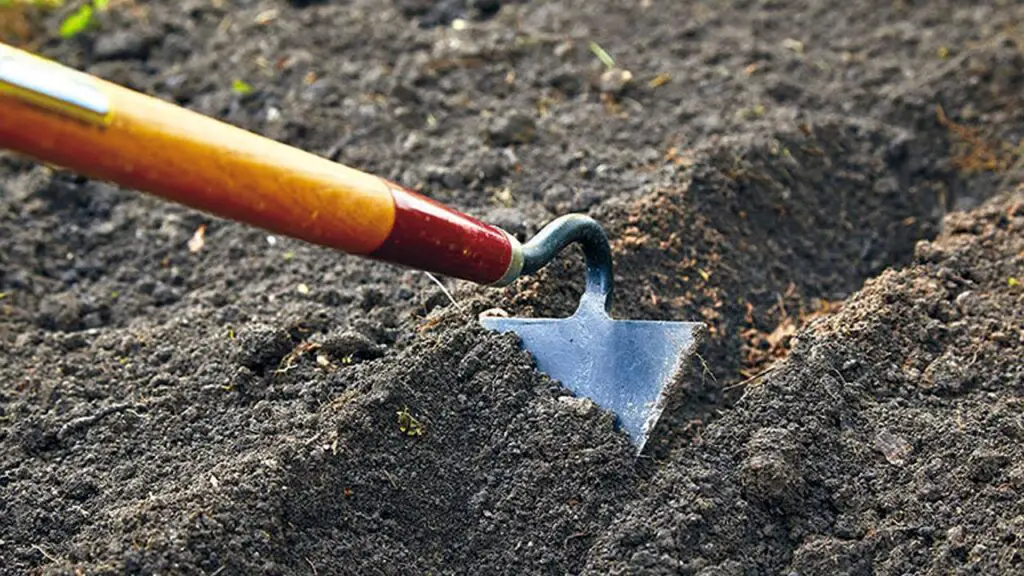
Conclusion
A gardening hoe is a tool used for cultivating and shaping the soil in a garden. It is an essential tool for any gardener, as it helps to loosen and aerate the soil, remove weeds, and create furrows for planting seeds. The appearance of a gardening hoe can vary depending on its specific purpose and design, but there are some common features that can help identify what a gardening hoe looks like.
One of the most distinctive features of a gardening hoe is its long handle, which is usually made of wood or metal. The handle is typically straight and provides a comfortable grip for the user. It allows the gardener to apply force and leverage when using the hoe to break up the soil or remove weeds. The length of the handle can vary, but it is usually long enough to allow the gardener to work while standing upright, reducing strain on the back and knees.
A gardening hoe is a tool with a long handle and a flat blade at the end. It is used for cultivating and shaping the soil in a garden, and is an essential tool for any gardener. The long handle provides leverage and allows the gardener to work while standing upright, reducing strain on the body. The hoe head, made of metal, comes in different shapes and sizes depending on the specific type of hoe. Whether you are a beginner or an experienced gardener, having a gardening hoe in your arsenal of tools will greatly assist you in maintaining a healthy and productive garden.




